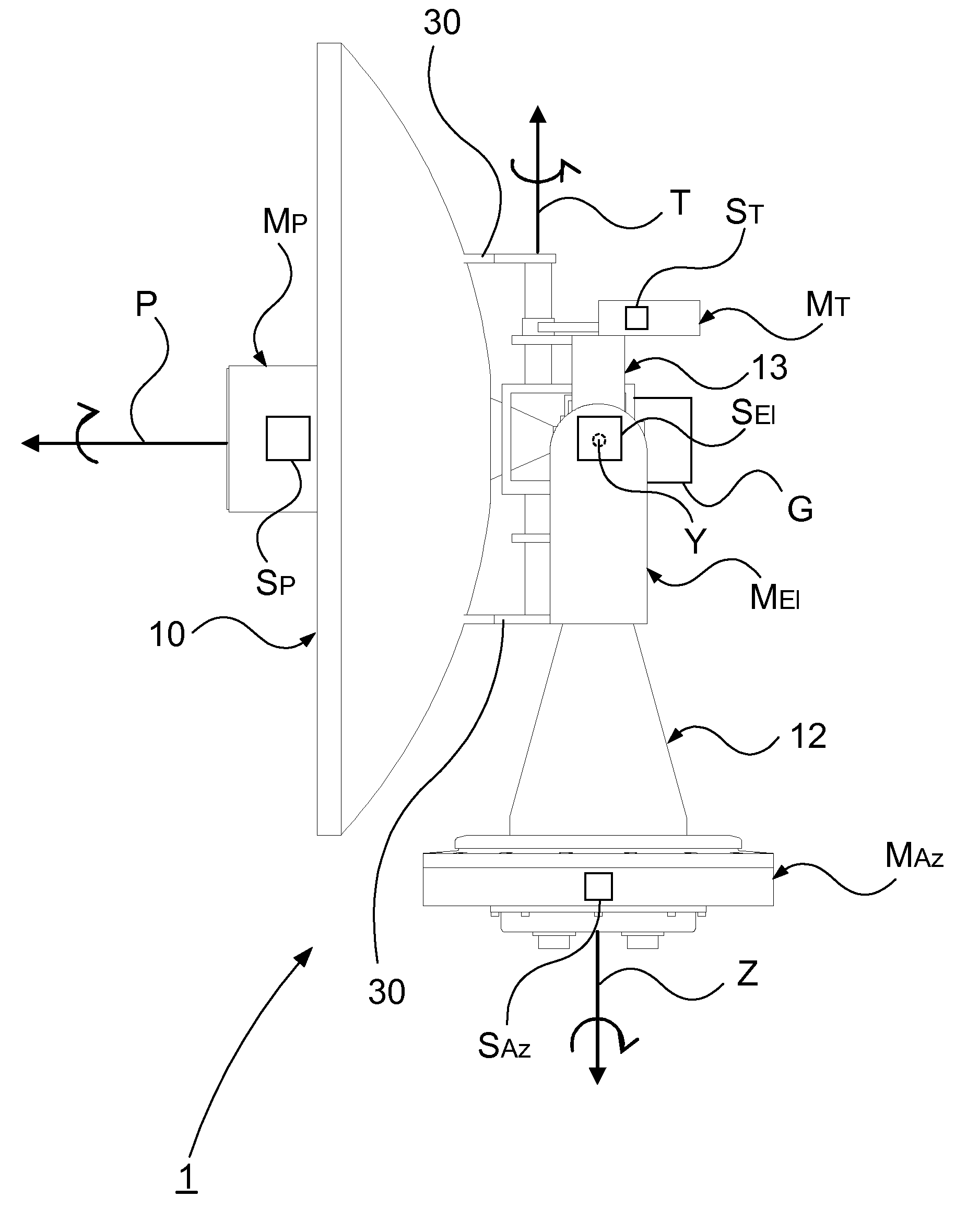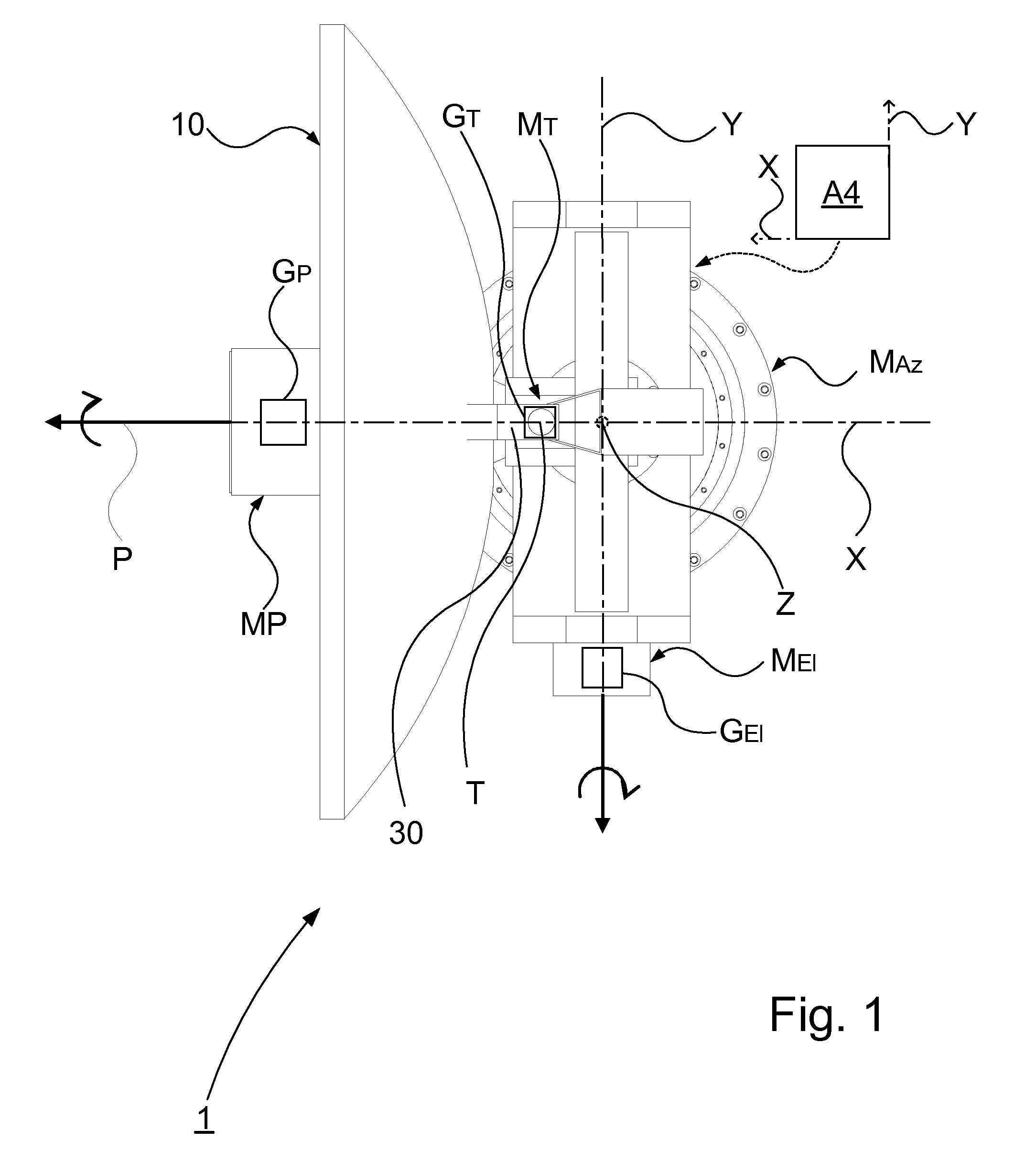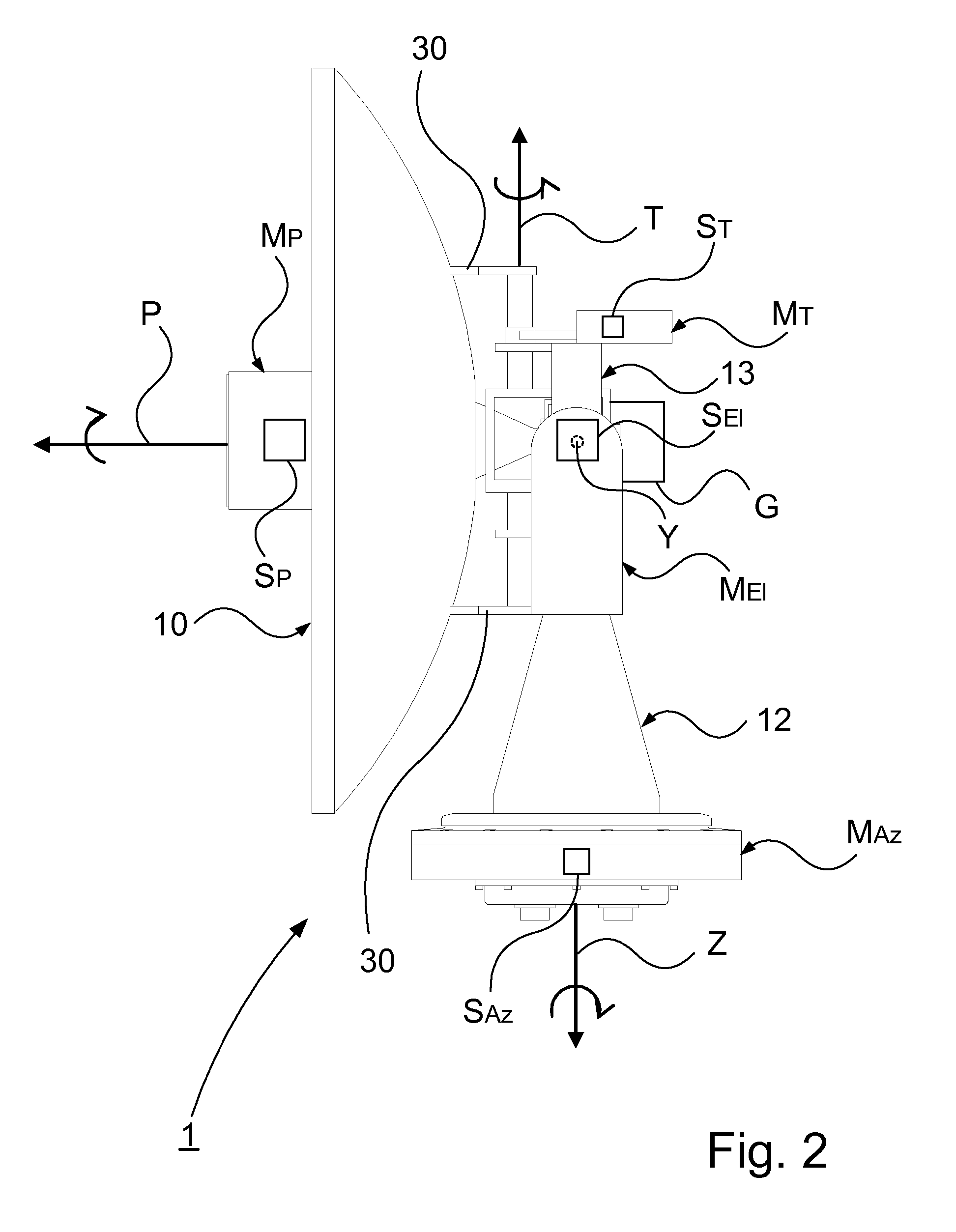Device and method for controlling a satellite tracking antenna
a satellite tracking and antenna technology, applied in the direction of antennas, antenna details, antenna adaptation in movable bodies, etc., can solve the problems of system failure, system failure, and inability to meet, so as to improve the ability to make, improve the stabilising performance of the device, and improve the effect of the ability to mak
- Summary
- Abstract
- Description
- Claims
- Application Information
AI Technical Summary
Benefits of technology
Problems solved by technology
Method used
Image
Examples
first embodiment
[0045]FIG. 1-3 show different views of a device 1 for controlling a satellite tracking antenna 10 according to the present invention. The azimuth axis drive means MAz constitutes a base. The base is arranged to support a support member 12 having a U-shaped configuration, said member being fixed to the base and having legs projecting upwardly from the base.
[0046]The support member 12 is arranged to carry a frame member 13 at an upper portion of said support member by means of the elevation axis Y, the frame member being rotatably arranged about the elevation axis Y. The elevation axis Y is thus located at a certain level above the base. The frame member 12 is connected to the antenna 10 via the tilt axis T. The tilt axis T is connected to the antenna 10 via a first and a second connection member 30, said members 30 being fixed to the antenna and connected to the tilt axis T such that the antenna is rotated when the tilt axis is rotated. The azimuth axis drive means MAz is arranged to...
second embodiment
[0048]FIG. 4 shows schematically a plan view of a device 2 for controlling a satellite tracking antenna 10 according to the present invention. The azimuth axis drive means MAz constitutes a base. The azimuth axis drive means MAz is arranged to impart a rotational motion to the base about the azimuth axis Z. The device further comprises an extension 14 rotationally connected to the elevation axis Y. The tilt axis T is connected to the elevation axis Y by means of said extension 14. The elevation axis drive means comprises a first and a second elevation motor MEl arranged to impart a rotational motion to the extension 14, and thus the antenna 10, about the elevation axis Y, the first and second motor being connected to the elevation axis Y at each side of the elevation axis, respectively. Alternatively the elevation axis drive means comprises a single motor arranged to impart a rotational motion to the elevation arm 14 about the elevation axis, the motor being connected to a side of t...
third embodiment
[0050]FIG. 5 shows schematically a plan view of a device 3 according to the present invention. The azimuth axis drive means MAz constitutes a base, and is arranged to impart a rotational motion to the base about the azimuth axis. The elevation axis drive means MEl is arranged to impart a rotational motion about the elevation axis Y. The device further comprises an extension 15 connected to the elevation axis drive means MEl. The tilt axis T is connected to the elevation axis Y by means of said extension 15. The tilt axis T is directly associated with the antenna 10, such that the antenna is rotatable about the tilt axis T. The elevation axis drive means comprises an elevation motor MEl arranged to impart a rotational motion about the elevation axis Y, and thus to the antenna 10 via the extension 15.
[0051]In this embodiment the tilt axis drive means comprises a first and second tilt motor MT1, MT2. The first motor MT1 is arranged to drive a transmission means constituted by a first b...
PUM
 Login to View More
Login to View More Abstract
Description
Claims
Application Information
 Login to View More
Login to View More - R&D
- Intellectual Property
- Life Sciences
- Materials
- Tech Scout
- Unparalleled Data Quality
- Higher Quality Content
- 60% Fewer Hallucinations
Browse by: Latest US Patents, China's latest patents, Technical Efficacy Thesaurus, Application Domain, Technology Topic, Popular Technical Reports.
© 2025 PatSnap. All rights reserved.Legal|Privacy policy|Modern Slavery Act Transparency Statement|Sitemap|About US| Contact US: help@patsnap.com



